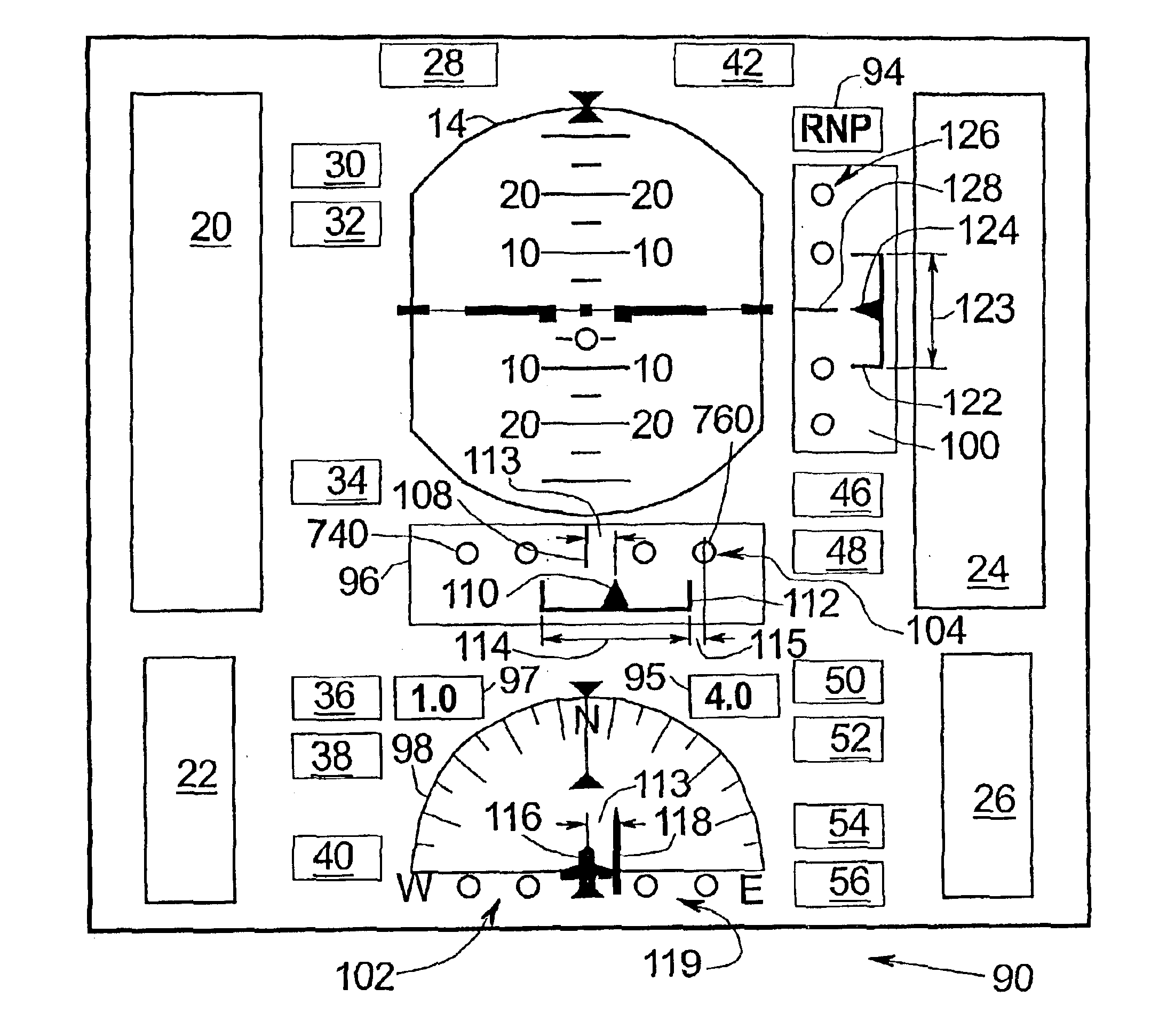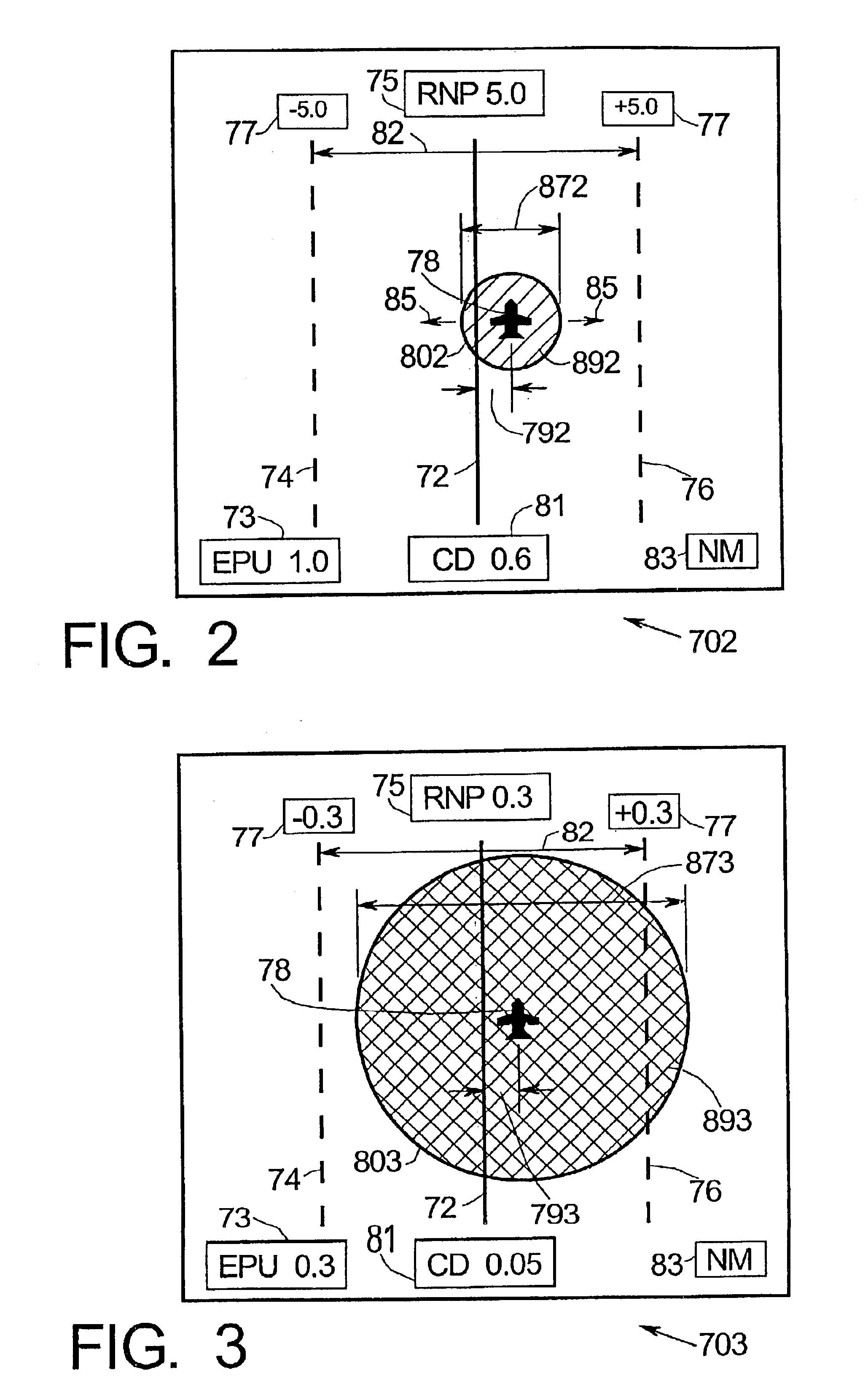Graphical display for aircraft navigation
a technology for aircraft navigation and graphical display, applied in the field of electronic instruments, can solve the problems of not providing sufficient navigation information to the pilot, difficult to add new information in a manner, and cannot replace unrelated essential information
- Summary
- Abstract
- Description
- Claims
- Application Information
AI Technical Summary
Benefits of technology
Problems solved by technology
Method used
Image
Examples
Embodiment Construction
[0017]The following detailed description of the invention is merely exemplary in nature and is not intended to limit the invention or the application and uses of the invention. Furthermore, there is no intention to be bound by any theory presented in the preceding background of the invention or the following detailed description of the invention.
[0018]FIG. 2 is a schematic presentation of display 702 showing RNP, EPU and course deviation (CD) information separately and in a graphical way that intuitively resembles the actual geometry of the flight path situation. Central line 72 represents the planned aircraft course (PAC). Parallel, spaced-apart lines 74, 76 show the RNP boundaries separated by distance 82 corresponding to twice the RNP value. The RNP value is conveniently displayed in boxes 75, 77. In this example RNP is ±5.0 nautical miles (NM). Small aircraft symbol 78 shows the actual aircraft position relative to the RNP boundaries and PAC 72. In this example, aircraft symbol ...
PUM
 Login to View More
Login to View More Abstract
Description
Claims
Application Information
 Login to View More
Login to View More - R&D
- Intellectual Property
- Life Sciences
- Materials
- Tech Scout
- Unparalleled Data Quality
- Higher Quality Content
- 60% Fewer Hallucinations
Browse by: Latest US Patents, China's latest patents, Technical Efficacy Thesaurus, Application Domain, Technology Topic, Popular Technical Reports.
© 2025 PatSnap. All rights reserved.Legal|Privacy policy|Modern Slavery Act Transparency Statement|Sitemap|About US| Contact US: help@patsnap.com



